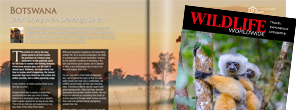A ‘Baby Boom’ and a Return for the Southern Resident Orcas

One could say it has been a whirlwind year for those who follow the Southern Resident Killer Whales. Starting from the tail end of a difficult 2014, and through to the early months of 2016, there was a near record number of births in this population, bringing reserved hope and optimism to the scientific community and everyone else who is enamored with these three families.
The boom started with the December birth of J50, or ‘Scarlet’ in 2014. She was followed closely by J51 ‘Nova’, L121 ‘Windsong’, and J52 ‘Sonic’; as well as J53, L123, J54 and J55 who are not yet named. These young whales receive a ceremonial welcome, with their names chosen through a Name-The-Baby contest supported by the Centre for Whale Research on San Juan Island.

Researchers have to capture just the right photograph to determine the gender of the calves; generally it all depends on the perfect playful roll exposing their bellies. There is some correlation between the abundance of Chinook salmon – their favorite entrée – and the number of calves born in the following year. So to some degree we can thank a healthy run of Chinook for the new crowd of youngsters, though there are many dynamic factors at play. Several organizations such as the Pacific Salmon Foundation are hard at work implementing programs to protect habitat for all species of salmon on the Pacific coast, meaning that hopefully these strong runs will continue to be seen. Several unseasonably hot, dry, and early summers have presented a challenge to many adult salmon returning to spawn in the streams where they hatched, as multiple species have a four year life cycle.
It is always a sobering reminder to note that calves from this population have a mortality rate that hovers around 50 percent. This new crop of youngsters is beating the odds in a sense, as only three of nine have been lost in the recent months. It is often difficult to determine the cause of death for a killer whale, as many times they are simply lost to the deep. When a whale is found ashore though, it is crucial for scientists to work quickly, learning all they can about what happened within this individuals body so that they can make better decisions for the management of the remaining families.
A suspenseful community welcomed the Southern Residents this summer, as they steadily returned to their coastal home waters in July, with rapidly growing calves glued to their doting mother’s flanks. During a near record spring of transient killer whale and humpback whale sightings in the Salish Sea, the Residents were notably absent. Researchers believe the Chinook salmon run came late this spring, accounting for J, K, and L pods spending more of their time foraging for the mature salmon off the west coast of Vancouver Island.

Seeming to correlate with the late arrival of the salmon, J pod adopted a travel route more typical of early May-June. They circuited from the Fraser River down through the Rosario Strait, before looping around to their typical ‘stomping grounds’ of the Haro Strait, and back up to the river again through the Gulf Islands. K and L pods have made brief returns to their coastal habitat, and their stays are predicted to become more frequent as the summer continues. All eyes are on the nursing calves as their mothers forage endlessly to support their rapid growth. These youngsters are already learning new acrobatic tricks, displaying them to the delight of everyone who is able to watch, and fostering optimism for the months to come.
All photos property of Amanda Madro
Join our trip to see these fascinating killer whale families in the wild. Or read Amanda Madro’s blog to find out more about the Southern Resident Killer Whales.








